-
EXECUTIVE SUMMARY
-
Market Overview
-
Key Findings
-
Market Segmentation
-
Competitive Landscape
-
Challenges and Opportunities
-
Future Outlook
-
\r\n
-
MARKET INTRODUCTION
-
Definition
-
Scope of the study
- Research Objective
- Assumption
- Limitations
-
\r\n
-
RESEARCH METHODOLOGY
-
Overview
-
Data Mining
-
Secondary Research
-
Primary Research
- Primary Interviews and Information Gathering Process
- Breakdown of Primary Respondents
-
Forecasting Model
-
Market Size Estimation
- Bottom-Up Approach
- Top-Down Approach
-
Data Triangulation
-
Validation
-
\r\n
-
MARKET DYNAMICS
-
Overview
-
Drivers
-
Restraints
-
Opportunities
-
\r\n
-
MARKET FACTOR ANALYSIS
-
Value chain Analysis
-
Porter's Five Forces Analysis
- Bargaining Power of Suppliers
- Bargaining Power of Buyers
- Threat of New Entrants
- Threat of Substitutes
- Intensity of Rivalry
-
COVID-19 Impact Analysis
- Market Impact Analysis
- Regional Impact
- Opportunity and Threat Analysis
-
\r\n
-
5G IN AVIATION MARKET, BY APPLICATION (USD BILLION)
-
Passenger Communications
-
Aircraft Maintenance
-
Air Traffic Management
-
In-Flight Entertainment
-
\r\n
-
5G IN AVIATION MARKET, BY END USE (USD BILLION)
-
Commercial Aviation
-
Cargo Aviation
-
Private Aviation
-
\r\n
-
5G IN AVIATION MARKET, BY TECHNOLOGY (USD BILLION)
-
Network Slicing
-
Massive Machine Type Communications
-
Ultra-Reliable Low Latency Communication
-
5G IN AVIATION MARKET, BY DEPLOYMENT TYPE (USD BILLION)
-
Private Network
-
Public Network
-
Hybrid Network
-
5G IN AVIATION MARKET, BY REGIONAL (USD BILLION)
-
North America
- US
- Canada
-
Europe
- Germany
- UK
- France
- Russia
- Italy
- Spain
- Rest of Europe
-
APAC
- China
- India
- Japan
- South Korea
- Malaysia
- Thailand
- Indonesia
- Rest of APAC
-
South America
- Brazil
- Mexico
- Argentina
- Rest of South America
-
MEA
- GCC Countries
- South Africa
- Rest of MEA
-
\r\n
-
COMPETITIVE LANDSCAPE
-
Overview
-
Competitive Analysis
-
Market share Analysis
-
Major Growth Strategy in the 5G in Aviation Market
-
Competitive Benchmarking
-
Leading Players in Terms of Number of Developments in the 5G in Aviation Market
-
Key developments and growth strategies
- New Product Launch/Service Deployment
- Merger & Acquisitions
- Joint Ventures
-
Major Players Financial Matrix
- Sales and Operating Income
- Major Players R&D Expenditure. 2023
-
COMPANY PROFILES
-
Nokia
- Financial Overview
- Products Offered
- Key Developments
- SWOT Analysis
- Key Strategies
-
Huawei
- Financial Overview
- Products Offered
- Key Developments
- SWOT Analysis
- Key Strategies
-
Lockheed Martin
- Financial Overview
- Products Offered
- Key Developments
- SWOT Analysis
- Key Strategies
-
Airbus
- Financial Overview
- Products Offered
- Key Developments
- SWOT Analysis
- Key Strategies
-
Panasonic
- Financial Overview
- Products Offered
- Key Developments
- SWOT Analysis
- Key Strategies
-
General Dynamics
- Financial Overview
- Products Offered
- Key Developments
- SWOT Analysis
- Key Strategies
-
Leonardo
- Financial Overview
- Products Offered
- Key Developments
- SWOT Analysis
- Key Strategies
-
Thales
- Financial Overview
- Products Offered
- Key Developments
- SWOT Analysis
- Key Strategies
-
Raytheon Technologies
- Financial Overview
- Products Offered
- Key Developments
- SWOT Analysis
- Key Strategies
-
Honeywell
- Financial Overview
- Products Offered
- Key Developments
- SWOT Analysis
- Key Strategies
-
Cisco
- Financial Overview
- Products Offered
- Key Developments
- SWOT Analysis
- Key Strategies
-
Ericsson
- Financial Overview
- Products Offered
- Key Developments
- SWOT Analysis
- Key Strategies
-
L3Harris Technologies
- Financial Overview
- Products Offered
- Key Developments
- SWOT Analysis
- Key Strategies
-
Boeing
- Financial Overview
- Products Offered
- Key Developments
- SWOT Analysis
- Key Strategies
-
Qualcomm
- Financial Overview
- Products Offered
- Key Developments
- SWOT Analysis
- Key Strategies
-
APPENDIX
-
References
-
Related Reports
-
\r\n
-
LIST OF TABLES
-
\r\n
-
LIST OF ASSUMPTIONS
-
NORTH AMERICA 5G IN AVIATION MARKET SIZE ESTIMATES & FORECAST, BY APPLICATION, 2019-2035 (USD BILLIONS)
-
NORTH AMERICA 5G IN AVIATION MARKET SIZE ESTIMATES & FORECAST, BY END USE, 2019-2035 (USD BILLIONS)
-
NORTH AMERICA 5G IN AVIATION MARKET SIZE ESTIMATES & FORECAST, BY TECHNOLOGY, 2019-2035 (USD BILLIONS)
-
NORTH AMERICA 5G IN AVIATION MARKET SIZE ESTIMATES & FORECAST, BY DEPLOYMENT TYPE, 2019-2035 (USD BILLIONS)
-
NORTH AMERICA 5G IN AVIATION MARKET SIZE ESTIMATES & FORECAST, BY REGIONAL, 2019-2035 (USD BILLIONS)
-
US 5G IN AVIATION MARKET SIZE ESTIMATES & FORECAST, BY APPLICATION, 2019-2035 (USD BILLIONS)
-
US 5G IN AVIATION MARKET SIZE ESTIMATES & FORECAST, BY END USE, 2019-2035 (USD BILLIONS)
-
US 5G IN AVIATION MARKET SIZE ESTIMATES & FORECAST, BY TECHNOLOGY, 2019-2035 (USD BILLIONS)
-
US 5G IN AVIATION MARKET SIZE ESTIMATES & FORECAST, BY DEPLOYMENT TYPE, 2019-2035 (USD BILLIONS)
-
US 5G IN AVIATION MARKET SIZE ESTIMATES & FORECAST, BY REGIONAL, 2019-2035 (USD BILLIONS)
-
CANADA 5G IN AVIATION MARKET SIZE ESTIMATES & FORECAST, BY APPLICATION, 2019-2035 (USD BILLIONS)
-
CANADA 5G IN AVIATION MARKET SIZE ESTIMATES & FORECAST, BY END USE, 2019-2035 (USD BILLIONS)
-
CANADA 5G IN AVIATION MARKET SIZE ESTIMATES & FORECAST, BY TECHNOLOGY, 2019-2035 (USD BILLIONS)
-
CANADA 5G IN AVIATION MARKET SIZE ESTIMATES & FORECAST, BY DEPLOYMENT TYPE, 2019-2035 (USD BILLIONS)
-
CANADA 5G IN AVIATION MARKET SIZE ESTIMATES & FORECAST, BY REGIONAL, 2019-2035 (USD BILLIONS)
-
EUROPE 5G IN AVIATION MARKET SIZE ESTIMATES & FORECAST, BY APPLICATION, 2019-2035 (USD BILLIONS)
-
EUROPE 5G IN AVIATION MARKET SIZE ESTIMATES & FORECAST, BY END USE, 2019-2035 (USD BILLIONS)
-
EUROPE 5G IN AVIATION MARKET SIZE ESTIMATES & FORECAST, BY TECHNOLOGY, 2019-2035 (USD BILLIONS)
-
EUROPE 5G IN AVIATION MARKET SIZE ESTIMATES & FORECAST, BY DEPLOYMENT TYPE, 2019-2035 (USD BILLIONS)
-
EUROPE 5G IN AVIATION MARKET SIZE ESTIMATES & FORECAST, BY REGIONAL, 2019-2035 (USD BILLIONS)
-
GERMANY 5G IN AVIATION MARKET SIZE ESTIMATES & FORECAST, BY APPLICATION, 2019-2035 (USD BILLIONS)
-
GERMANY 5G IN AVIATION MARKET SIZE ESTIMATES & FORECAST, BY END USE, 2019-2035 (USD BILLIONS)
-
GERMANY 5G IN AVIATION MARKET SIZE ESTIMATES & FORECAST, BY TECHNOLOGY, 2019-2035 (USD BILLIONS)
-
GERMANY 5G IN AVIATION MARKET SIZE ESTIMATES & FORECAST, BY DEPLOYMENT TYPE, 2019-2035 (USD BILLIONS)
-
GERMANY 5G IN AVIATION MARKET SIZE ESTIMATES & FORECAST, BY REGIONAL, 2019-2035 (USD BILLIONS)
-
UK 5G IN AVIATION MARKET SIZE ESTIMATES & FORECAST, BY APPLICATION, 2019-2035 (USD BILLIONS)
-
UK 5G IN AVIATION MARKET SIZE ESTIMATES & FORECAST, BY END USE, 2019-2035 (USD BILLIONS)
-
UK 5G IN AVIATION MARKET SIZE ESTIMATES & FORECAST, BY TECHNOLOGY, 2019-2035 (USD BILLIONS)
-
UK 5G IN AVIATION MARKET SIZE ESTIMATES & FORECAST, BY DEPLOYMENT TYPE, 2019-2035 (USD BILLIONS)
-
UK 5G IN AVIATION MARKET SIZE ESTIMATES & FORECAST, BY REGIONAL, 2019-2035 (USD BILLIONS)
-
FRANCE 5G IN AVIATION MARKET SIZE ESTIMATES & FORECAST, BY APPLICATION, 2019-2035 (USD BILLIONS)
-
FRANCE 5G IN AVIATION MARKET SIZE ESTIMATES & FORECAST, BY END USE, 2019-2035 (USD BILLIONS)
-
FRANCE 5G IN AVIATION MARKET SIZE ESTIMATES & FORECAST, BY TECHNOLOGY, 2019-2035 (USD BILLIONS)
-
FRANCE 5G IN AVIATION MARKET SIZE ESTIMATES & FORECAST, BY DEPLOYMENT TYPE, 2019-2035 (USD BILLIONS)
-
FRANCE 5G IN AVIATION MARKET SIZE ESTIMATES & FORECAST, BY REGIONAL, 2019-2035 (USD BILLIONS)
-
RUSSIA 5G IN AVIATION MARKET SIZE ESTIMATES & FORECAST, BY APPLICATION, 2019-2035 (USD BILLIONS)
-
RUSSIA 5G IN AVIATION MARKET SIZE ESTIMATES & FORECAST, BY END USE, 2019-2035 (USD BILLIONS)
-
RUSSIA 5G IN AVIATION MARKET SIZE ESTIMATES & FORECAST, BY TECHNOLOGY, 2019-2035 (USD BILLIONS)
-
RUSSIA 5G IN AVIATION MARKET SIZE ESTIMATES & FORECAST, BY DEPLOYMENT TYPE, 2019-2035 (USD BILLIONS)
-
RUSSIA 5G IN AVIATION MARKET SIZE ESTIMATES & FORECAST, BY REGIONAL, 2019-2035 (USD BILLIONS)
-
ITALY 5G IN AVIATION MARKET SIZE ESTIMATES & FORECAST, BY APPLICATION, 2019-2035 (USD BILLIONS)
-
ITALY 5G IN AVIATION MARKET SIZE ESTIMATES & FORECAST, BY END USE, 2019-2035 (USD BILLIONS)
-
ITALY 5G IN AVIATION MARKET SIZE ESTIMATES & FORECAST, BY TECHNOLOGY, 2019-2035 (USD BILLIONS)
-
ITALY 5G IN AVIATION MARKET SIZE ESTIMATES & FORECAST, BY DEPLOYMENT TYPE, 2019-2035 (USD BILLIONS)
-
ITALY 5G IN AVIATION MARKET SIZE ESTIMATES & FORECAST, BY REGIONAL, 2019-2035 (USD BILLIONS)
-
SPAIN 5G IN AVIATION MARKET SIZE ESTIMATES & FORECAST, BY APPLICATION, 2019-2035 (USD BILLIONS)
-
SPAIN 5G IN AVIATION MARKET SIZE ESTIMATES & FORECAST, BY END USE, 2019-2035 (USD BILLIONS)
-
SPAIN 5G IN AVIATION MARKET SIZE ESTIMATES & FORECAST, BY TECHNOLOGY, 2019-2035 (USD BILLIONS)
-
SPAIN 5G IN AVIATION MARKET SIZE ESTIMATES & FORECAST, BY DEPLOYMENT TYPE, 2019-2035 (USD BILLIONS)
-
SPAIN 5G IN AVIATION MARKET SIZE ESTIMATES & FORECAST, BY REGIONAL, 2019-2035 (USD BILLIONS)
-
REST OF EUROPE 5G IN AVIATION MARKET SIZE ESTIMATES & FORECAST, BY APPLICATION, 2019-2035 (USD BILLIONS)
-
REST OF EUROPE 5G IN AVIATION MARKET SIZE ESTIMATES & FORECAST, BY END USE, 2019-2035 (USD BILLIONS)
-
REST OF EUROPE 5G IN AVIATION MARKET SIZE ESTIMATES & FORECAST, BY TECHNOLOGY, 2019-2035 (USD BILLIONS)
-
REST OF EUROPE 5G IN AVIATION MARKET SIZE ESTIMATES & FORECAST, BY DEPLOYMENT TYPE, 2019-2035 (USD BILLIONS)
-
REST OF EUROPE 5G IN AVIATION MARKET SIZE ESTIMATES & FORECAST, BY REGIONAL, 2019-2035 (USD BILLIONS)
-
APAC 5G IN AVIATION MARKET SIZE ESTIMATES & FORECAST, BY APPLICATION, 2019-2035 (USD BILLIONS)
-
APAC 5G IN AVIATION MARKET SIZE ESTIMATES & FORECAST, BY END USE, 2019-2035 (USD BILLIONS)
-
APAC 5G IN AVIATION MARKET SIZE ESTIMATES & FORECAST, BY TECHNOLOGY, 2019-2035 (USD BILLIONS)
-
APAC 5G IN AVIATION MARKET SIZE ESTIMATES & FORECAST, BY DEPLOYMENT TYPE, 2019-2035 (USD BILLIONS)
-
APAC 5G IN AVIATION MARKET SIZE ESTIMATES & FORECAST, BY REGIONAL, 2019-2035 (USD BILLIONS)
-
CHINA 5G IN AVIATION MARKET SIZE ESTIMATES & FORECAST, BY APPLICATION, 2019-2035 (USD BILLIONS)
-
CHINA 5G IN AVIATION MARKET SIZE ESTIMATES & FORECAST, BY END USE, 2019-2035 (USD BILLIONS)
-
CHINA 5G IN AVIATION MARKET SIZE ESTIMATES & FORECAST, BY TECHNOLOGY, 2019-2035 (USD BILLIONS)
-
CHINA 5G IN AVIATION MARKET SIZE ESTIMATES & FORECAST, BY DEPLOYMENT TYPE, 2019-2035 (USD BILLIONS)
-
CHINA 5G IN AVIATION MARKET SIZE ESTIMATES & FORECAST, BY REGIONAL, 2019-2035 (USD BILLIONS)
-
INDIA 5G IN AVIATION MARKET SIZE ESTIMATES & FORECAST, BY APPLICATION, 2019-2035 (USD BILLIONS)
-
INDIA 5G IN AVIATION MARKET SIZE ESTIMATES & FORECAST, BY END USE, 2019-2035 (USD BILLIONS)
-
INDIA 5G IN AVIATION MARKET SIZE ESTIMATES & FORECAST, BY TECHNOLOGY, 2019-2035 (USD BILLIONS)
-
INDIA 5G IN AVIATION MARKET SIZE ESTIMATES & FORECAST, BY DEPLOYMENT TYPE, 2019-2035 (USD BILLIONS)
-
INDIA 5G IN AVIATION MARKET SIZE ESTIMATES & FORECAST, BY REGIONAL, 2019-2035 (USD BILLIONS)
-
JAPAN 5G IN AVIATION MARKET SIZE ESTIMATES & FORECAST, BY APPLICATION, 2019-2035 (USD BILLIONS)
-
JAPAN 5G IN AVIATION MARKET SIZE ESTIMATES & FORECAST, BY END USE, 2019-2035 (USD BILLIONS)
-
JAPAN 5G IN AVIATION MARKET SIZE ESTIMATES & FORECAST, BY TECHNOLOGY, 2019-2035 (USD BILLIONS)
-
JAPAN 5G IN AVIATION MARKET SIZE ESTIMATES & FORECAST, BY DEPLOYMENT TYPE, 2019-2035 (USD BILLIONS)
-
JAPAN 5G IN AVIATION MARKET SIZE ESTIMATES & FORECAST, BY REGIONAL, 2019-2035 (USD BILLIONS)
-
SOUTH KOREA 5G IN AVIATION MARKET SIZE ESTIMATES & FORECAST, BY APPLICATION, 2019-2035 (USD BILLIONS)
-
SOUTH KOREA 5G IN AVIATION MARKET SIZE ESTIMATES & FORECAST, BY END USE, 2019-2035 (USD BILLIONS)
-
SOUTH KOREA 5G IN AVIATION MARKET SIZE ESTIMATES & FORECAST, BY TECHNOLOGY, 2019-2035 (USD BILLIONS)
-
SOUTH KOREA 5G IN AVIATION MARKET SIZE ESTIMATES & FORECAST, BY DEPLOYMENT TYPE, 2019-2035 (USD BILLIONS)
-
SOUTH KOREA 5G IN AVIATION MARKET SIZE ESTIMATES & FORECAST, BY REGIONAL, 2019-2035 (USD BILLIONS)
-
MALAYSIA 5G IN AVIATION MARKET SIZE ESTIMATES & FORECAST, BY APPLICATION, 2019-2035 (USD BILLIONS)
-
MALAYSIA 5G IN AVIATION MARKET SIZE ESTIMATES & FORECAST, BY END USE, 2019-2035 (USD BILLIONS)
-
MALAYSIA 5G IN AVIATION MARKET SIZE ESTIMATES & FORECAST, BY TECHNOLOGY, 2019-2035 (USD BILLIONS)
-
MALAYSIA 5G IN AVIATION MARKET SIZE ESTIMATES & FORECAST, BY DEPLOYMENT TYPE, 2019-2035 (USD BILLIONS)
-
MALAYSIA 5G IN AVIATION MARKET SIZE ESTIMATES & FORECAST, BY REGIONAL, 2019-2035 (USD BILLIONS)
-
THAILAND 5G IN AVIATION MARKET SIZE ESTIMATES & FORECAST, BY APPLICATION, 2019-2035 (USD BILLIONS)
-
THAILAND 5G IN AVIATION MARKET SIZE ESTIMATES & FORECAST, BY END USE, 2019-2035 (USD BILLIONS)
-
THAILAND 5G IN AVIATION MARKET SIZE ESTIMATES & FORECAST, BY TECHNOLOGY, 2019-2035 (USD BILLIONS)
-
THAILAND 5G IN AVIATION MARKET SIZE ESTIMATES & FORECAST, BY DEPLOYMENT TYPE, 2019-2035 (USD BILLIONS)
-
THAILAND 5G IN AVIATION MARKET SIZE ESTIMATES & FORECAST, BY REGIONAL, 2019-2035 (USD BILLIONS)
-
INDONESIA 5G IN AVIATION MARKET SIZE ESTIMATES & FORECAST, BY APPLICATION, 2019-2035 (USD BILLIONS)
-
INDONESIA 5G IN AVIATION MARKET SIZE ESTIMATES & FORECAST, BY END USE, 2019-2035 (USD BILLIONS)
-
INDONESIA 5G IN AVIATION MARKET SIZE ESTIMATES & FORECAST, BY TECHNOLOGY, 2019-2035 (USD BILLIONS)
-
INDONESIA 5G IN AVIATION MARKET SIZE ESTIMATES & FORECAST, BY DEPLOYMENT TYPE, 2019-2035 (USD BILLIONS)
-
INDONESIA 5G IN AVIATION MARKET SIZE ESTIMATES & FORECAST, BY REGIONAL, 2019-2035 (USD BILLIONS)
-
REST OF APAC 5G IN AVIATION MARKET SIZE ESTIMATES & FORECAST, BY APPLICATION, 2019-2035 (USD BILLIONS)
-
REST OF APAC 5G IN AVIATION MARKET SIZE ESTIMATES & FORECAST, BY END USE, 2019-2035 (USD BILLIONS)
-
REST OF APAC 5G IN AVIATION MARKET SIZE ESTIMATES & FORECAST, BY TECHNOLOGY, 2019-2035 (USD BILLIONS)
-
REST OF APAC 5G IN AVIATION MARKET SIZE ESTIMATES & FORECAST, BY DEPLOYMENT TYPE, 2019-2035 (USD BILLIONS)
-
REST OF APAC 5G IN AVIATION MARKET SIZE ESTIMATES & FORECAST, BY REGIONAL, 2019-2035 (USD BILLIONS)
-
SOUTH AMERICA 5G IN AVIATION MARKET SIZE ESTIMATES & FORECAST, BY APPLICATION, 2019-2035 (USD BILLIONS)
-
SOUTH AMERICA 5G IN AVIATION MARKET SIZE ESTIMATES & FORECAST, BY END USE, 2019-2035 (USD BILLIONS)
-
SOUTH AMERICA 5G IN AVIATION MARKET SIZE ESTIMATES & FORECAST, BY TECHNOLOGY, 2019-2035 (USD BILLIONS)
-
SOUTH AMERICA 5G IN AVIATION MARKET SIZE ESTIMATES & FORECAST, BY DEPLOYMENT TYPE, 2019-2035 (USD BILLIONS)
-
SOUTH AMERICA 5G IN AVIATION MARKET SIZE ESTIMATES & FORECAST, BY REGIONAL, 2019-2035 (USD BILLIONS)
-
BRAZIL 5G IN AVIATION MARKET SIZE ESTIMATES & FORECAST, BY APPLICATION, 2019-2035 (USD BILLIONS)
-
BRAZIL 5G IN AVIATION MARKET SIZE ESTIMATES & FORECAST, BY END USE, 2019-2035 (USD BILLIONS)
-
BRAZIL 5G IN AVIATION MARKET SIZE ESTIMATES & FORECAST, BY TECHNOLOGY, 2019-2035 (USD BILLIONS)
-
BRAZIL 5G IN AVIATION MARKET SIZE ESTIMATES & FORECAST, BY DEPLOYMENT TYPE, 2019-2035 (USD BILLIONS)
-
BRAZIL 5G IN AVIATION MARKET SIZE ESTIMATES & FORECAST, BY REGIONAL, 2019-2035 (USD BILLIONS)
-
MEXICO 5G IN AVIATION MARKET SIZE ESTIMATES & FORECAST, BY APPLICATION, 2019-2035 (USD BILLIONS)
-
MEXICO 5G IN AVIATION MARKET SIZE ESTIMATES & FORECAST, BY END USE, 2019-2035 (USD BILLIONS)
-
MEXICO 5G IN AVIATION MARKET SIZE ESTIMATES & FORECAST, BY TECHNOLOGY, 2019-2035 (USD BILLIONS)
-
MEXICO 5G IN AVIATION MARKET SIZE ESTIMATES & FORECAST, BY DEPLOYMENT TYPE, 2019-2035 (USD BILLIONS)
-
MEXICO 5G IN AVIATION MARKET SIZE ESTIMATES & FORECAST, BY REGIONAL, 2019-2035 (USD BILLIONS)
-
ARGENTINA 5G IN AVIATION MARKET SIZE ESTIMATES & FORECAST, BY APPLICATION, 2019-2035 (USD BILLIONS)
-
ARGENTINA 5G IN AVIATION MARKET SIZE ESTIMATES & FORECAST, BY END USE, 2019-2035 (USD BILLIONS)
-
ARGENTINA 5G IN AVIATION MARKET SIZE ESTIMATES & FORECAST, BY TECHNOLOGY, 2019-2035 (USD BILLIONS)
-
ARGENTINA 5G IN AVIATION MARKET SIZE ESTIMATES & FORECAST, BY DEPLOYMENT TYPE, 2019-2035 (USD BILLIONS)
-
ARGENTINA 5G IN AVIATION MARKET SIZE ESTIMATES & FORECAST, BY REGIONAL, 2019-2035 (USD BILLIONS)
-
REST OF SOUTH AMERICA 5G IN AVIATION MARKET SIZE ESTIMATES & FORECAST, BY APPLICATION, 2019-2035 (USD BILLIONS)
-
REST OF SOUTH AMERICA 5G IN AVIATION MARKET SIZE ESTIMATES & FORECAST, BY END USE, 2019-2035 (USD BILLIONS)
-
REST OF SOUTH AMERICA 5G IN AVIATION MARKET SIZE ESTIMATES & FORECAST, BY TECHNOLOGY, 2019-2035 (USD BILLIONS)
-
REST OF SOUTH AMERICA 5G IN AVIATION MARKET SIZE ESTIMATES & FORECAST, BY DEPLOYMENT TYPE, 2019-2035 (USD BILLIONS)
-
REST OF SOUTH AMERICA 5G IN AVIATION MARKET SIZE ESTIMATES & FORECAST, BY REGIONAL, 2019-2035 (USD BILLIONS)
-
MEA 5G IN AVIATION MARKET SIZE ESTIMATES & FORECAST, BY APPLICATION, 2019-2035 (USD BILLIONS)
-
MEA 5G IN AVIATION MARKET SIZE ESTIMATES & FORECAST, BY END USE, 2019-2035 (USD BILLIONS)
-
MEA 5G IN AVIATION MARKET SIZE ESTIMATES & FORECAST, BY TECHNOLOGY, 2019-2035 (USD BILLIONS)
-
MEA 5G IN AVIATION MARKET SIZE ESTIMATES & FORECAST, BY DEPLOYMENT TYPE, 2019-2035 (USD BILLIONS)
-
MEA 5G IN AVIATION MARKET SIZE ESTIMATES & FORECAST, BY REGIONAL, 2019-2035 (USD BILLIONS)
-
GCC COUNTRIES 5G IN AVIATION MARKET SIZE ESTIMATES & FORECAST, BY APPLICATION, 2019-2035 (USD BILLIONS)
-
GCC COUNTRIES 5G IN AVIATION MARKET SIZE ESTIMATES & FORECAST, BY END USE, 2019-2035 (USD BILLIONS)
-
GCC COUNTRIES 5G IN AVIATION MARKET SIZE ESTIMATES & FORECAST, BY TECHNOLOGY, 2019-2035 (USD BILLIONS)
-
GCC COUNTRIES 5G IN AVIATION MARKET SIZE ESTIMATES & FORECAST, BY DEPLOYMENT TYPE, 2019-2035 (USD BILLIONS)
-
GCC COUNTRIES 5G IN AVIATION MARKET SIZE ESTIMATES & FORECAST, BY REGIONAL, 2019-2035 (USD BILLIONS)
-
SOUTH AFRICA 5G IN AVIATION MARKET SIZE ESTIMATES & FORECAST, BY APPLICATION, 2019-2035 (USD BILLIONS)
-
SOUTH AFRICA 5G IN AVIATION MARKET SIZE ESTIMATES & FORECAST, BY END USE, 2019-2035 (USD BILLIONS)
-
SOUTH AFRICA 5G IN AVIATION MARKET SIZE ESTIMATES & FORECAST, BY TECHNOLOGY, 2019-2035 (USD BILLIONS)
-
SOUTH AFRICA 5G IN AVIATION MARKET SIZE ESTIMATES & FORECAST, BY DEPLOYMENT TYPE, 2019-2035 (USD BILLIONS)
-
SOUTH AFRICA 5G IN AVIATION MARKET SIZE ESTIMATES & FORECAST, BY REGIONAL, 2019-2035 (USD BILLIONS)
-
REST OF MEA 5G IN AVIATION MARKET SIZE ESTIMATES & FORECAST, BY APPLICATION, 2019-2035 (USD BILLIONS)
-
REST OF MEA 5G IN AVIATION MARKET SIZE ESTIMATES & FORECAST, BY END USE, 2019-2035 (USD BILLIONS)
-
REST OF MEA 5G IN AVIATION MARKET SIZE ESTIMATES & FORECAST, BY TECHNOLOGY, 2019-2035 (USD BILLIONS)
-
REST OF MEA 5G IN AVIATION MARKET SIZE ESTIMATES & FORECAST, BY DEPLOYMENT TYPE, 2019-2035 (USD BILLIONS)
-
REST OF MEA 5G IN AVIATION MARKET SIZE ESTIMATES & FORECAST, BY REGIONAL, 2019-2035 (USD BILLIONS)
-
PRODUCT LAUNCH/PRODUCT DEVELOPMENT/APPROVAL
-
ACQUISITION/PARTNERSHIP
-
\r\n
-
LIST OF FIGURES
-
\r\n
-
MARKET SYNOPSIS
-
NORTH AMERICA 5G IN AVIATION MARKET ANALYSIS
-
US 5G IN AVIATION MARKET ANALYSIS BY APPLICATION
-
US 5G IN AVIATION MARKET ANALYSIS BY END USE
-
US 5G IN AVIATION MARKET ANALYSIS BY TECHNOLOGY
-
US 5G IN AVIATION MARKET ANALYSIS BY DEPLOYMENT TYPE
-
US 5G IN AVIATION MARKET ANALYSIS BY REGIONAL
-
CANADA 5G IN AVIATION MARKET ANALYSIS BY APPLICATION
-
CANADA 5G IN AVIATION MARKET ANALYSIS BY END USE
-
CANADA 5G IN AVIATION MARKET ANALYSIS BY TECHNOLOGY
-
CANADA 5G IN AVIATION MARKET ANALYSIS BY DEPLOYMENT TYPE
-
CANADA 5G IN AVIATION MARKET ANALYSIS BY REGIONAL
-
EUROPE 5G IN AVIATION MARKET ANALYSIS
-
GERMANY 5G IN AVIATION MARKET ANALYSIS BY APPLICATION
-
GERMANY 5G IN AVIATION MARKET ANALYSIS BY END USE
-
GERMANY 5G IN AVIATION MARKET ANALYSIS BY TECHNOLOGY
-
GERMANY 5G IN AVIATION MARKET ANALYSIS BY DEPLOYMENT TYPE
-
GERMANY 5G IN AVIATION MARKET ANALYSIS BY REGIONAL
-
UK 5G IN AVIATION MARKET ANALYSIS BY APPLICATION
-
UK 5G IN AVIATION MARKET ANALYSIS BY END USE
-
UK 5G IN AVIATION MARKET ANALYSIS BY TECHNOLOGY
-
UK 5G IN AVIATION MARKET ANALYSIS BY DEPLOYMENT TYPE
-
UK 5G IN AVIATION MARKET ANALYSIS BY REGIONAL
-
FRANCE 5G IN AVIATION MARKET ANALYSIS BY APPLICATION
-
FRANCE 5G IN AVIATION MARKET ANALYSIS BY END USE
-
FRANCE 5G IN AVIATION MARKET ANALYSIS BY TECHNOLOGY
-
FRANCE 5G IN AVIATION MARKET ANALYSIS BY DEPLOYMENT TYPE
-
FRANCE 5G IN AVIATION MARKET ANALYSIS BY REGIONAL
-
RUSSIA 5G IN AVIATION MARKET ANALYSIS BY APPLICATION
-
RUSSIA 5G IN AVIATION MARKET ANALYSIS BY END USE
-
RUSSIA 5G IN AVIATION MARKET ANALYSIS BY TECHNOLOGY
-
RUSSIA 5G IN AVIATION MARKET ANALYSIS BY DEPLOYMENT TYPE
-
RUSSIA 5G IN AVIATION MARKET ANALYSIS BY REGIONAL
-
ITALY 5G IN AVIATION MARKET ANALYSIS BY APPLICATION
-
ITALY 5G IN AVIATION MARKET ANALYSIS BY END USE
-
ITALY 5G IN AVIATION MARKET ANALYSIS BY TECHNOLOGY
-
ITALY 5G IN AVIATION MARKET ANALYSIS BY DEPLOYMENT TYPE
-
ITALY 5G IN AVIATION MARKET ANALYSIS BY REGIONAL
-
SPAIN 5G IN AVIATION MARKET ANALYSIS BY APPLICATION
-
SPAIN 5G IN AVIATION MARKET ANALYSIS BY END USE
-
SPAIN 5G IN AVIATION MARKET ANALYSIS BY TECHNOLOGY
-
SPAIN 5G IN AVIATION MARKET ANALYSIS BY DEPLOYMENT TYPE
-
SPAIN 5G IN AVIATION MARKET ANALYSIS BY REGIONAL
-
REST OF EUROPE 5G IN AVIATION MARKET ANALYSIS BY APPLICATION
-
REST OF EUROPE 5G IN AVIATION MARKET ANALYSIS BY END USE
-
REST OF EUROPE 5G IN AVIATION MARKET ANALYSIS BY TECHNOLOGY
-
REST OF EUROPE 5G IN AVIATION MARKET ANALYSIS BY DEPLOYMENT TYPE
-
REST OF EUROPE 5G IN AVIATION MARKET ANALYSIS BY REGIONAL
-
APAC 5G IN AVIATION MARKET ANALYSIS
-
CHINA 5G IN AVIATION MARKET ANALYSIS BY APPLICATION
-
CHINA 5G IN AVIATION MARKET ANALYSIS BY END USE
-
CHINA 5G IN AVIATION MARKET ANALYSIS BY TECHNOLOGY
-
CHINA 5G IN AVIATION MARKET ANALYSIS BY DEPLOYMENT TYPE
-
CHINA 5G IN AVIATION MARKET ANALYSIS BY REGIONAL
-
INDIA 5G IN AVIATION MARKET ANALYSIS BY APPLICATION
-
INDIA 5G IN AVIATION MARKET ANALYSIS BY END USE
-
INDIA 5G IN AVIATION MARKET ANALYSIS BY TECHNOLOGY
-
INDIA 5G IN AVIATION MARKET ANALYSIS BY DEPLOYMENT TYPE
-
INDIA 5G IN AVIATION MARKET ANALYSIS BY REGIONAL
-
JAPAN 5G IN AVIATION MARKET ANALYSIS BY APPLICATION
-
JAPAN 5G IN AVIATION MARKET ANALYSIS BY END USE
-
JAPAN 5G IN AVIATION MARKET ANALYSIS BY TECHNOLOGY
-
JAPAN 5G IN AVIATION MARKET ANALYSIS BY DEPLOYMENT TYPE
-
JAPAN 5G IN AVIATION MARKET ANALYSIS BY REGIONAL
-
SOUTH KOREA 5G IN AVIATION MARKET ANALYSIS BY APPLICATION
-
SOUTH KOREA 5G IN AVIATION MARKET ANALYSIS BY END USE
-
SOUTH KOREA 5G IN AVIATION MARKET ANALYSIS BY TECHNOLOGY
-
SOUTH KOREA 5G IN AVIATION MARKET ANALYSIS BY DEPLOYMENT TYPE
-
SOUTH KOREA 5G IN AVIATION MARKET ANALYSIS BY REGIONAL
-
MALAYSIA 5G IN AVIATION MARKET ANALYSIS BY APPLICATION
-
MALAYSIA 5G IN AVIATION MARKET ANALYSIS BY END USE
-
MALAYSIA 5G IN AVIATION MARKET ANALYSIS BY TECHNOLOGY
-
MALAYSIA 5G IN AVIATION MARKET ANALYSIS BY DEPLOYMENT TYPE
-
MALAYSIA 5G IN AVIATION MARKET ANALYSIS BY REGIONAL
-
THAILAND 5G IN AVIATION MARKET ANALYSIS BY APPLICATION
-
THAILAND 5G IN AVIATION MARKET ANALYSIS BY END USE
-
THAILAND 5G IN AVIATION MARKET ANALYSIS BY TECHNOLOGY
-
THAILAND 5G IN AVIATION MARKET ANALYSIS BY DEPLOYMENT TYPE
-
THAILAND 5G IN AVIATION MARKET ANALYSIS BY REGIONAL
-
INDONESIA 5G IN AVIATION MARKET ANALYSIS BY APPLICATION
-
INDONESIA 5G IN AVIATION MARKET ANALYSIS BY END USE
-
INDONESIA 5G IN AVIATION MARKET ANALYSIS BY TECHNOLOGY
-
INDONESIA 5G IN AVIATION MARKET ANALYSIS BY DEPLOYMENT TYPE
-
INDONESIA 5G IN AVIATION MARKET ANALYSIS BY REGIONAL
-
REST OF APAC 5G IN AVIATION MARKET ANALYSIS BY APPLICATION
-
REST OF APAC 5G IN AVIATION MARKET ANALYSIS BY END USE
-
REST OF APAC 5G IN AVIATION MARKET ANALYSIS BY TECHNOLOGY
-
REST OF APAC 5G IN AVIATION MARKET ANALYSIS BY DEPLOYMENT TYPE
-
REST OF APAC 5G IN AVIATION MARKET ANALYSIS BY REGIONAL
-
SOUTH AMERICA 5G IN AVIATION MARKET ANALYSIS
-
BRAZIL 5G IN AVIATION MARKET ANALYSIS BY APPLICATION
-
BRAZIL 5G IN AVIATION MARKET ANALYSIS BY END USE
-
BRAZIL 5G IN AVIATION MARKET ANALYSIS BY TECHNOLOGY
-
BRAZIL 5G IN AVIATION MARKET ANALYSIS BY DEPLOYMENT TYPE
-
BRAZIL 5G IN AVIATION MARKET ANALYSIS BY REGIONAL
-
MEXICO 5G IN AVIATION MARKET ANALYSIS BY APPLICATION
-
MEXICO 5G IN AVIATION MARKET ANALYSIS BY END USE
-
MEXICO 5G IN AVIATION MARKET ANALYSIS BY TECHNOLOGY
-
MEXICO 5G IN AVIATION MARKET ANALYSIS BY DEPLOYMENT TYPE
-
MEXICO 5G IN AVIATION MARKET ANALYSIS BY REGIONAL
-
ARGENTINA 5G IN AVIATION MARKET ANALYSIS BY APPLICATION
-
ARGENTINA 5G IN AVIATION MARKET ANALYSIS BY END USE
-
ARGENTINA 5G IN AVIATION MARKET ANALYSIS BY TECHNOLOGY
-
ARGENTINA 5G IN AVIATION MARKET ANALYSIS BY DEPLOYMENT TYPE
-
ARGENTINA 5G IN AVIATION MARKET ANALYSIS BY REGIONAL
-
REST OF SOUTH AMERICA 5G IN AVIATION MARKET ANALYSIS BY APPLICATION
-
REST OF SOUTH AMERICA 5G IN AVIATION MARKET ANALYSIS BY END USE
-
REST OF SOUTH AMERICA 5G IN AVIATION MARKET ANALYSIS BY TECHNOLOGY
-
REST OF SOUTH AMERICA 5G IN AVIATION MARKET ANALYSIS BY DEPLOYMENT TYPE
-
REST OF SOUTH AMERICA 5G IN AVIATION MARKET ANALYSIS BY REGIONAL
-
MEA 5G IN AVIATION MARKET ANALYSIS
-
GCC COUNTRIES 5G IN AVIATION MARKET ANALYSIS BY APPLICATION
-
GCC COUNTRIES 5G IN AVIATION MARKET ANALYSIS BY END USE
-
GCC COUNTRIES 5G IN AVIATION MARKET ANALYSIS BY TECHNOLOGY
-
GCC COUNTRIES 5G IN AVIATION MARKET ANALYSIS BY DEPLOYMENT TYPE
-
GCC COUNTRIES 5G IN AVIATION MARKET ANALYSIS BY REGIONAL
-
SOUTH AFRICA 5G IN AVIATION MARKET ANALYSIS BY APPLICATION
-
SOUTH AFRICA 5G IN AVIATION MARKET ANALYSIS BY END USE
-
SOUTH AFRICA 5G IN AVIATION MARKET ANALYSIS BY TECHNOLOGY
-
SOUTH AFRICA 5G IN AVIATION MARKET ANALYSIS BY DEPLOYMENT TYPE
-
SOUTH AFRICA 5G IN AVIATION MARKET ANALYSIS BY REGIONAL
-
REST OF MEA 5G IN AVIATION MARKET ANALYSIS BY APPLICATION
-
REST OF MEA 5G IN AVIATION MARKET ANALYSIS BY END USE
-
REST OF MEA 5G IN AVIATION MARKET ANALYSIS BY TECHNOLOGY
-
REST OF MEA 5G IN AVIATION MARKET ANALYSIS BY DEPLOYMENT TYPE
-
REST OF MEA 5G IN AVIATION MARKET ANALYSIS BY REGIONAL
-
KEY BUYING CRITERIA OF 5G IN AVIATION MARKET
-
RESEARCH PROCESS OF MRFR
-
DRO ANALYSIS OF 5G IN AVIATION MARKET
-
DRIVERS IMPACT ANALYSIS: 5G IN AVIATION MARKET
-
RESTRAINTS IMPACT ANALYSIS: 5G IN AVIATION MARKET
-
SUPPLY / VALUE CHAIN: 5G IN AVIATION MARKET
-
5G IN AVIATION MARKET, BY APPLICATION, 2025 (% SHARE)
-
5G IN AVIATION MARKET, BY APPLICATION, 2019 TO 2035 (USD Billions)
-
5G IN AVIATION MARKET, BY END USE, 2025 (% SHARE)
-
5G IN AVIATION MARKET, BY END USE, 2019 TO 2035 (USD Billions)
-
5G IN AVIATION MARKET, BY TECHNOLOGY, 2025 (% SHARE)
-
5G IN AVIATION MARKET, BY TECHNOLOGY, 2019 TO 2035 (USD Billions)
-
5G IN AVIATION MARKET, BY DEPLOYMENT TYPE, 2025 (% SHARE)
-
5G IN AVIATION MARKET, BY DEPLOYMENT TYPE, 2019 TO 2035 (USD Billions)
-
5G IN AVIATION MARKET, BY REGIONAL, 2025 (% SHARE)
-
5G IN AVIATION MARKET, BY REGIONAL, 2019 TO 2035 (USD Billions)
-
BENCHMARKING OF MAJOR COMPETITORS
-
"

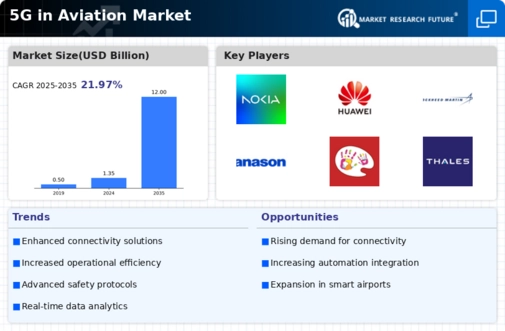
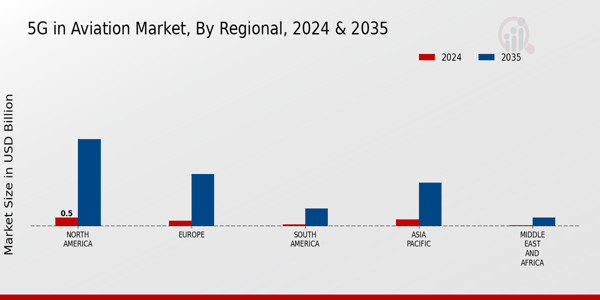

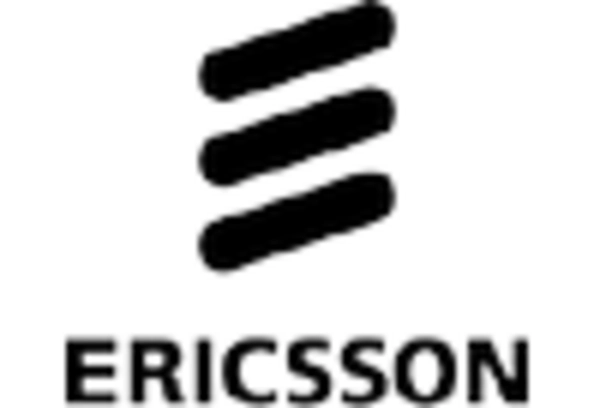
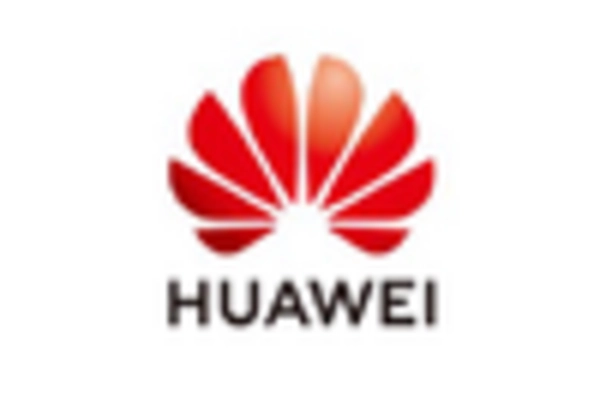

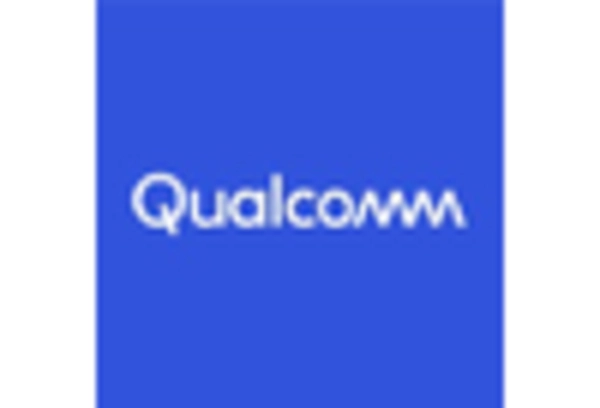


Leave a Comment